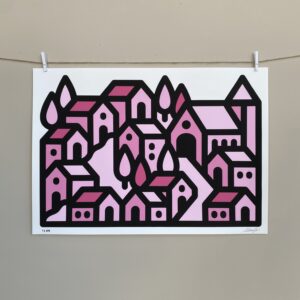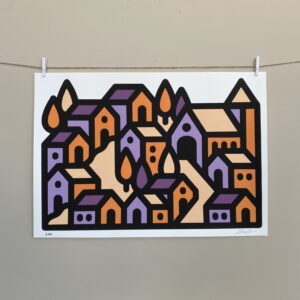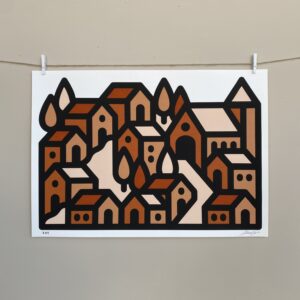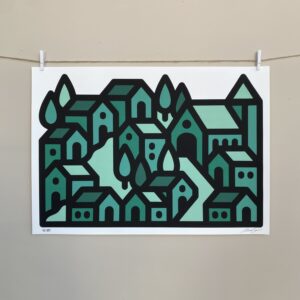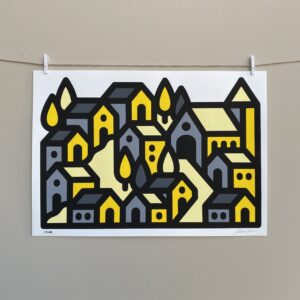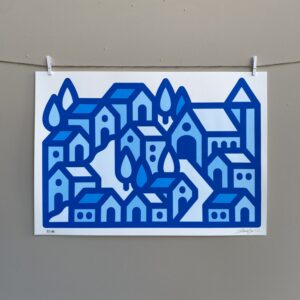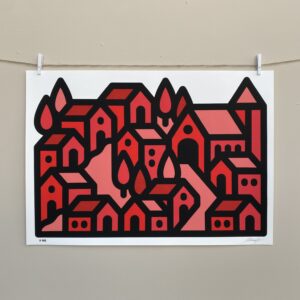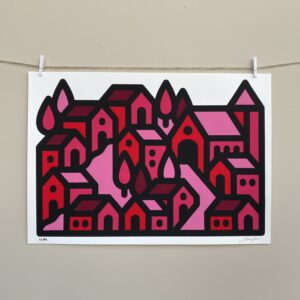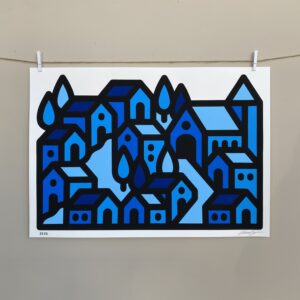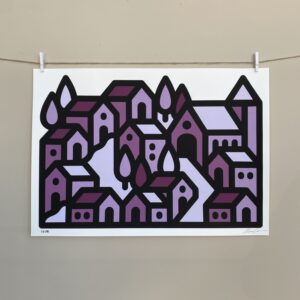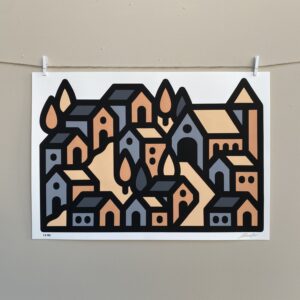Impression, Carcente
IT - Impressione, Carcente
Carcente è il nome del paesino in cui ho trascorso gran parte della mia infanzia, un piccolo borgo per la maggior parte disabitato, senza strade né comodità, un gruppo di case in pietra costruite su una montagna che affaccia sul lago di Como. I miei nonni materni si innamorarono di quel luogo e investirono i loro risparmi per acquistare un rudere e nel tempo libero ristrutturarlo. Il numero di abitanti di Carcente non arrivava a riempire le dita di due mani nonostante le case che componevano il paesino erano almeno 5 o 6 volte tante, ormai disabitate oppure diroccate. Oltre alle case c’erano solo una piccola chiesa e un lavatoio. Le donne del paese si ritrovavano nello spiazzo del lavatoio, immerse nel profumo del sapone di Marsiglia che strofinavano con forza sui panni e chiacchieravano risciacquando le lenzuola nel fontanone, per questo l’acqua aveva sempre un colore bianco torbido. Inutile dire che l’unico vero appuntamento era la domenica mattina quando veniva celebrata la Messa nella piccola chiesa. Era divertente vedere le persone che durante la settimana incontravi vestite sempre con gli stessi indumenti, chi da pastore, da falegname o da muratore, sfoderare il loro abito della festa, probabilmente riesumato dal loro matrimonio, e venire a festeggiare Dio e il prete. Le mie giornate passavano in totale libertà e in una felice solitudine, esplorando con curiosità ogni luogo segreto di quella perla incastonata tra i boschi e le mulattiere. Nonostante lo scenario rimanesse immutato io riuscivo ogni giorno a vivere quel paese come se non ci fossi mai stato, grazie all’immaginazione e alla genuinità dovuta all’età, era come se esistessi in un luogo senza spazio né tempo. La fortuna di vivere nel “momento presente” amplificava i miei sensi e registrava nel mio inconscio profumi, sapori, momenti dove la luce filtrava in maniera particolare, esperienze che sarebbero diventate ricordi e che ovviamente al tempo non ero consapevole stessero costruendo il mio bagaglio emotivo. Crescendo andai sempre meno a Carcente fino a non andarci quasi più del tutto. Solo recentemente, vivendo un po’ di malessere psicologico, ho iniziato a scavare nel mio vissuto scoprendo con amarezza che nonostante quel paesino sia ancora così come l’ho lasciato, non è più possibile viverlo con gli occhi di quel bambino. Da questa consapevolezza nasce il mio progetto “impressioni di Carcente”, una serie di 365 stampe raffiguranti lo stesso soggetto differenziate solo dall’uso di diverse combinazioni di colore. Come per i pittori Impressionisti voglio cercare di catturare la luce che ogni giorno si presenta in maniera unica ma, a differenza loro che erano soliti dipingere “en plein air”, io la cercherò nei miei ricordi. Non ho l’arroganza di pretendere che tutti sentano la nostalgia di un’infanzia passata in un luogo ma sono sicuro che ognuno ha un proprio Carcente a cui riandare con la memoria, magari quando inaspettatamente annusano un profumo o quando sovrappensiero vedono il sole attraverso le fronde di un albero.

